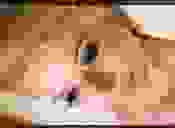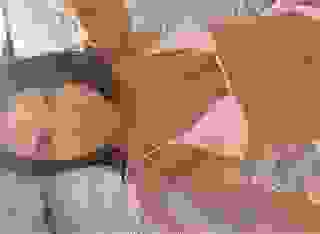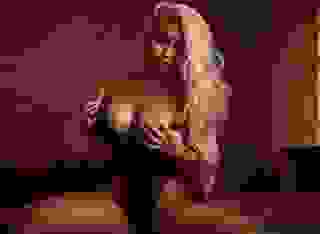- NonHuman
- Panthera Spelaea Ch. 01-10
Note: You can change font size, font face, and turn on dark mode by clicking the "A" icon tab in the Story Info Box.
You can temporarily switch back to a Classic Literotica® experience during our ongoing public Beta testing. Please consider leaving feedback on issues you experience or suggest improvements.
Click hereAuthor's Note: Inspiration for this story came from the documentary "Lost Beasts of the Ice Age" on Discovery Channel. Information on Pleistocene Park is from Wikipedia and interviews on Youtube.
Tributary of the Protoka Ulstrovskaya River
North of Belaya Gora, Sakha Republic, Siberia
August 5, 2019
The dig site was miserable. Outside, the sun beat down relentlessly. Two hundred miles north of the Arctic Circle meant the sun never set in the summertime. The land, covered by snow and ice for nine months out of the year, burst into life in the short season. I stepped out of the tent, checking my hat and layered jackets. August didn't mean it was warm out, as a good day would reach sixty degrees. The river was ice cold, as were the winds coming off it.
The footing wasn't any better. While the snow melted away, it left behind a layer of mud and sand. Below that was permafrost, You had to walk carefully, or you might leave a boot behind you on the walk to the boat. The river had receded quite a bit since the early summer flooding, leaving only quicksand-like deposits and mud to cross.
So why was I here in the middle of the Siberian tundra?
Blame my fascination with the Ice Age movie.
I watched that movie hundreds of times as a kid. My friends liked sports, dinosaurs, or Star Wars; my walls had posters of wooly mammoths. I read everything I could find about them, along with wooly rhinoceros, steppe bison, cave bears, cave lions, reindeer, musk ox, and grey wolves all roamed the grasslands that formed modern-day Siberia. I never dropped the interest, majoring in Integrative Biology for a bachelor's, and was now pursuing a doctorate in Evolutionary Biology focused on Ice Age life.
My educational choices were a source of conflict with my parents. My father was the owner and CEO of Cantwell Energy Solutions, which provided technical support to oil drilling operations, including survey, repair, and recovery. Lewis Cantwell was a classic Type-A executive; he worked seventy hours a week, did everything at full speed, and expected others to be the same. He'd not so much dated my Mom as he had researched and interviewed her. Mom was beautiful, intelligent, athletic, and had the right family connections to help his career. Carolyn fell in love with him, ran his home, and gave him two sons and one daughter that looked good in the photos we took every Christmas. Beyond that, I rarely saw him, and I never heard him talk about me like I was anything but a waste of potential.
As the eldest child, he expected me to follow in his footsteps. That meant Ivy-league education in petroleum engineering, postgraduate work in business or law, and summer internships. Once school was over, he would move me into various positions within his company to prepare me to take over when he retired.
The problem was that I had no interest in any of it, nor did I admire his company and what they stood for. I was in high school the first time I challenged him on his company's contributions to global warming. We nearly came to blows over the roast beef. Mom quickly banned all discussions of politics, energy, or climate when the two of us were at home together. Thankfully, that wasn't often.
You can imagine how the conversation went when I made my college choice. My grades, test scores, and my father's connections got me into Harvard's Integrative Biology program. My Mom, who wanted me to be happy until I eventually came to my senses, talked my Dad into supporting it. "It's only an undergrad degree, and biology is pre-Med," she told him. "Let him pursue his interests, and when he grows up, he'll listen to you."
Four years later, I still wasn't listening. Dad threatened to cut off my support unless I studied an approved subject, and I threatened to run off and join a Greenpeace expedition to stop offshore drilling in Alaska. As the expedition involved "directed actions" that could get me arrested, the potential embarrassment was enough to get him to back down. I returned to Harvard that fall, beginning my graduate education in biology.
My savior came from an unlikely source. Our middle brother, Patrick, was studying Computer Science at MIT; he might make millions in the tech area, but he didn't care about oil. My little sister, Melanie, turned out to have an interest in business and money that her older brothers did not. She would be attending the Wharton School of Business in a year.
That left me free to follow my dreams. While at Harvard, I'd made contact with geneticist George Church. His research focused on using fragments of DNA recovered from Wooly Mammoths in Siberia and grafting them into Asian Elephant DNA. His ultimate goal was to restore the species, extinct for over four millennia, to the Arctic Steppes.
It was a radical idea, but potentially one with global effects. The extinction of large species such as wooly mammoths and wooly rhinoceros speeded up changes in the world climate. The vast grasslands, maintained by the large animals ripping up small trees and shrubs, began to turn into pine forests. The forests absorbed more of the limited sunlight, raising the temperature of the air and the ground. The steppe regions became permafrost tundra, and the loss of grasslands took away the food that previously supported the large herds.
And permafrost was a climate bomb with the fuse lit. As the world warmed, the trillions of tons of methane trapped in the frozen lands would slowly release. Methane was a far more significant contributor to global warming than carbon dioxide. It was a vicious cycle; global warming melts more permafrost, the methane causes the world to warm faster, and that causes more permafrost to melt.
Last summer, I worked at Pleistocene Park, a nature reserve on the Kolyma River in northeast Siberia. There, Russian scientists Sergey and Nikita Zimov are testing the hypothesis that overhunting was primarily responsible for the extinction of wildlife and the disappearance of grasslands at the end of the Pleistocene Era. They established a fenced-in, sixteen-square-kilometer preserve of tundra and started introducing large grazing animals into it. Bison, wild horses, moose, yaks, sheep, and musk oxen are all present now.
The experiment seems to be working. The scientists kick-started it using large vehicles in place of the largest animals to crush paths through dense willow shrubs. The grazing animals packed the soil, and grasses soon replaced mosses and weeds. Soon, grassland dominated the landscape inside the fences. As the scientists hoped, the changes had the desired effect on the permafrost. With outside air temps at -40c, control areas had a ground temperature of only -5c, while places where grazers trampled the snow were at -30c.
All this brought me to Siberia in August. The ivory tusks of a wooly mammoth were worth up to eighty thousand dollars a pair, and locals risked jail to get them. They would use water pumps to blast into the mud along rivers, searching for animals frozen underground. Authorities couldn't stop it, but they could limit the damage. Russian authorities had authorized a group to search for remains of wooly mammoths with two conditions. First, they must have government supervision. Second, they must cooperate with scientists to preserve any significant finds. Our group was here to identify, preserve, and study these frozen carcasses. I would bring the best DNA samples back to Harvard.
For a Paleobiologist, this was Disneyland.
Ch. 2
I swatted away one of the bugs that swarmed us as soon as we left the protection of our tents. I heard a tent zipper to my right and behind me open and close. "Good morning, Mr. Cantwell," a female voice said.
"John, please," I replied as I turned to face her. "Surely we can dispense of the formalities when we are in the middle of freaking nowhere?"
A smile came to Nicole Silverman's face, one that could light up a room. Nicole was thirty and an associate professor at the University of Chicago. She had a beauty that couldn't be hidden, with a classical face and curly brown hair pulled back in a ponytail. Nicole was precisely the kind of woman I'd like to date, but the band on her ring finger put her out of reach. "When you've got Doctor before your name, you get the first-name treatment," she said with a smile as she waved the gnats away from her face. "We should eat. It looks like a hot one today."
I got in line behind her for the oatmeal, biscuits, and coffee we had at base camp. We sat at the picnic tables next to Ekatarina Zevkov, a biologist from the University of Moscow, and my team leader. "Vitali said they found a rear leg in Cave Three a few minutes ago," Ekatarina said. "We'll be heading there right away."
Vitali Semchenko was the Expedition Leader, overseeing our group of ten scientists. Vitali worked the uneasy truce between our scientists and the ten men searching for a fortune in ivory during the short summer months. Wooly mammoth tusks could be up to fourteen feet long, and the ivory worth up to seventy-five thousand dollars (US) to the group recovering them. The larger of the two wooly rhinoceros horns could be three feet long and worth thirty thousand dollars a pair. It was a lot of money in a place where the average income was less than fifteen thousand a year.
It was why the Russian Government had to allow regulated searching as a way to control the illegal. But, unfortunately, ivory poachers destroyed the evidence, leaving important biological specimens in piles of bones and rotting flesh along the riverbanks.
The solution was to work together as best they could. The Government issued permits, but Government officials and scientists would monitor the digs. If their hoses exposed remains of scientific interest, the ivory miners had to let them recover the specimens first. Once uncovered, it was a race for time to remove the dead animals and transport them to cold storage before they thawed and decomposed.
Cave Three was one of three deep exploratory caves dug into the riverbank about a mile up a tributary well north of the city. Ivory mining didn't use heavy equipment; it used submersible pumps, hoses, and fire nozzles. The pumps went out in deeper parts of the river, and workers used the hoses to blast tunnels into the frozen mud of the exposed permafrost. A cold slurry of muddy water got pumped out of the caves and back to the river, leaving the tunnel carved through the ice. It was a wet, miserable job going on around the clock to take advantage of the short season.
Finding places to dig was easy; you looked on the riverbank for the bones of mammoths and large animals, then worked back. The frozen cliffs were sluffing off melting permafrost chunks with every warm summer day, continuously exposing new areas to explore. Bodies piled up where thin ice and snow covering narrow tributaries or pits collapsed, trapping the animals that would freeze to death. The prospectors followed the trails like a miner following a trail of gold. Cave Three was close, but it was deep and COLD. "Wonderful. More sliding around in this crap."
"That's why I have graduate students," Nicole laughed. The junior members had to go up with the hose team as they carefully excavated around the frozen body while the 'experts' came forward after the hoses were off. I'd be wearing a full rain suit and goggles, feeling the thirty-five-degree water spray all morning. Yay, me.
Thirty minutes later, we had our gear, grub, and butts in the boat heading downriver to the tributary leading to Cave Three. Nicholai was the driver of our beat-up, flat-bottomed riverboat. He was forty-two but looked to be eighty, and I'd never seen him without a cigarette in his hands. He beached the boat near the hoses, and I took the line and tied it off to a stake pounded into the mud.
I put on my jacket and put my goggles around my neck. The hardhat I wore had a rechargeable light on the front, and I had two extra battery packs in my pocket. The heavy fireman's boots I had on sank into the mud to the bottom of my waterproof pants. Nicole and Ekatarina dressed, and we checked each other's gear before heading into the cave.
Cave Three was dug straight into the riverbank until it was eight feet tall and ten feet wide at the entrance. The cave started where a mammoth carcass appeared early this season, spotted by a bit of tusk sticking out of the riverbank. After recovering it, the prospectors kept going. The scientists helped by using ground-penetrating radar to seek out anomalies that might be additional specimens.
Working in the cave was dangerous, and you had to be aware of your surroundings. You were walking through a muddy ice cube, not solid rock, and that ice cube was melting. The warmer water, your body heat, and your breath are all slowly melting the cave. Every surface you touched was wet and slippery, the hose spray would make visibility difficult, and the noise of the blasting water made communications difficult.
I followed my coworkers deep into the cave alongside the fire hoses along the side of the walkway. The water blasting stopped just before we reached the workers, and we joined Vitali and the nightshift team. "What do you have," Ekatarina asked.
The hose team was taking a break, so we all got closer to take a look. "What do you think, Mr. Cantwell," Nicole asked.
I examined the exposed rear legs and tail that the water blasting exposed. The elephant-like padded feet were over a foot across. "Mature male," I said. "Well-preserved. I can't wait to see the rest of it."
Now that we'd found an animal, the blasting away with big firehoses stopped. The workers knew it was time for us to take over. They turned off the pump so we could remove the big nozzle at the end of the hose. In its place, a triple-splitter got added to the end of the line, and three smaller hoses with wands got hooked up. The workers at the river started the pump, and our crew went to work.
We spent the next hour working around the perimeter of the carcass, washing away the mud and ice holding it in place. I used one of the hoses, working my way along the upper legs towards the hips. The spray of mud and ice got in everything, including my mouth, as I cleared it away from the thick hair of the mammoth.
I'd cleared a two-foot-wide, six-foot-long channel along the left side of the carcass, completely exposing the upper thighs and short tail. Vitali had gone out with the workers to retrieve tarps, ropes, and come-alongs. A specimen like this was invaluable if removed whole, but that wouldn't be easy. The bull mammoth could be twelve feet tall and weigh several tons.
We took a break from the spraying to drink water and evaluate what we had found. "We're going to have to widen the cave to get this thing out of here," Nicole said.
"If it is intact, it will be worth it," Ekatarina said as she looked at the rear of the beast. "This could be one of the largest intact specimens ever recovered."
"We won't know until we've excavated around it," Nicole said, letting out a sigh. There was a lot of work left to get it all. "Let's get back to work."
I grabbed my hose, spraying down the loose muck at the back of the opening I was creating. Then, I spotted something near the back leg that didn't look right. Turning my headlamp to it, I used a gloved hand to move the muck aside and expose the yellow fur. "Holy shit," I said as my fingers kept trying to clean off the object. "Look at this!"
The others came up, some gasping as they saw what I had found. "Is that?"
"Panthera Spelaea, the Cave Lion. And this is an adult."
Ch. 3
The other scientists quickly gathered around the portion of the left rear paw that was barely visible. The curved, dangerous-looking claws and light fur combined with the size made the identification easy. Only a portion of the paw was exposed, but the entire paw would be the size of my head. Panthera Spelaea's closest modern relative was the African Lion, but the Cave Lion was about twenty percent larger based on skeletons. "Incredible," Ekatarina said. "This could be the first intact adult cave lion ever discovered if it remained preserved in this ice."
That was true. We knew of the species coming from skeletons and from the discovery of two frozen cave lion cubs not far from here in 2016. The cubs were intact, thought to have been covered by a rockslide then locked in the permafrost. Each cub had been the size of a large house cat, while this adult would be huge. "Finding them together like this is interesting. It's possible the lion fell through the ice first and the mammoth fell on top of it," Nicole said. "I wonder if the Cave Lion was attacking and ended up with the Mammoth on top of him or her."
"Anything is possible at this point. If we find bite marks in the mammoth, how cool would that be," I said. I looked at the tiny portions of each large animal we had uncovered. The longer we sat here, the more the exposed flesh would soften and start to rot. "How should we handle this? We've got two incredibly valuable ice cubes here that are frozen together, and chainsaws are out of the question." The finds were priceless.
Vitali gathered his team to discuss that, and we divided into groups. I was with the team that would be water-blasting the carcasses free of the surrounding soil. We were going to start by removing the soil at least three feet in all directions around the finds, expanding the cave until we had a colossal lump in the middle. Doing that without the water jets damaging the thawing specimens could take a day, maybe more.
The second team would start widening the cave entrance, working from the river back to us. We needed it at least five by four meters, roughly sixteen feet wide and twelve high, with the floor as flat as possible
Once both tasks were complete, the fun part would begin. We would work around underneath the mammoth, freeing it from the soil underneath and the cave lion using the smaller hoses. Releasing the specimens without damage would take a long time to do. I asked the obvious question. "How the hell are we going to pull an intact mammoth out of here without destroying the cave lion underneath? This thing could weigh six metric tons!" A metric ton was a thousand kg, roughly 2200 pounds, meaning this mammoth could weigh more than thirteen thousand pounds. That was as much as three full-sized pickup trucks!
"That will be the fun part, eh, John?" Vitali's eyes were smiling; this would be the highlight of his career. "I will think of something. Meanwhile, you all have an easy job. I have to find a helicopter crew willing to fly out here and transport it once it is out, plus finding an open-top freezer big enough to take it!"
Let's see; spend my time at base camp calling for help, or be up to your knees in cold water and mud for a few days? I think he was getting the better deal.
Our group got back to work, using the hoses and wands to wash the frozen dirt from over the top of the mammoth. It was slow, messy work, and after eight hours of work with a short break for lunch, I was physically exhausted. We turned over to the afternoon crew with about a quarter of the job done. We'd excavated the rear legs and about a foot up the torso. It was slow at the bottom because the bottom of the carcass was about a foot below the floor level. We decided to leave that for the end rather than creating a pool of water underneath that we'd have to stand in while doing the rest of the work.
We were tired but happy as our group headed back to base camp. We were part of something historic, and it made everything I went through to get here worth it. Nothing in my father's company would ever compare to the discovery I'd made today. The expedition would have been epic with only the mammoth, but it would be legendary if we recovered an intact cave lion.








